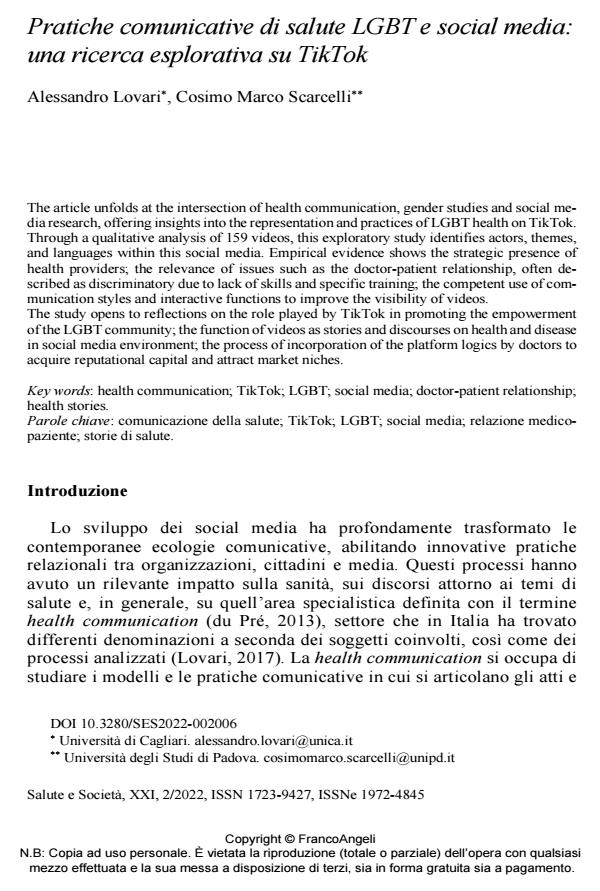Pratiche comunicative di salute LGBT e social media: una ricerca esplorativa su TikTok
Journal title SALUTE E SOCIETÀ
Author/s Alessandro Lovari, Cosimo Marco Scarcelli
Publishing Year 2022 Issue 2022/2
Language Italian Pages 17 P. 67-83 File size 94 KB
DOI 10.3280/SES2022-002006
DOI is like a bar code for intellectual property: to have more infomation
click here
Below, you can see the article first page
If you want to buy this article in PDF format, you can do it, following the instructions to buy download credits

FrancoAngeli is member of Publishers International Linking Association, Inc (PILA), a not-for-profit association which run the CrossRef service enabling links to and from online scholarly content.
The article unfolds at the intersection of health communication, gender studies and social media research, offering insights into the representation and practices of LGBT health on TikTok. Through a qualitative analysis of 159 videos, this exploratory study identifies actors, themes, and languages within this social media. Empirical evidence shows the strategic presence of health providers; the relevance of issues such as the doctor-patient relationship, often described as discriminatory due to lack of skills and specific training; the competent use of communication styles and interactive functions to improve the visibility of videos. The study opens to reflections on the role played by TikTok in promoting the empowerment of the LGBT community; the function of videos as stories and discourses on health and disease in social media environment; the process of incorporation of the platform logics by doctors to acquire reputational capital and attract market niches.
Keywords: health communication; TikTok; LGBT; social media; doctor-patient relationship; health stories.
Alessandro Lovari, Cosimo Marco Scarcelli, Pratiche comunicative di salute LGBT e social media: una ricerca esplorativa su TikTok in "SALUTE E SOCIETÀ" 2/2022, pp 67-83, DOI: 10.3280/SES2022-002006